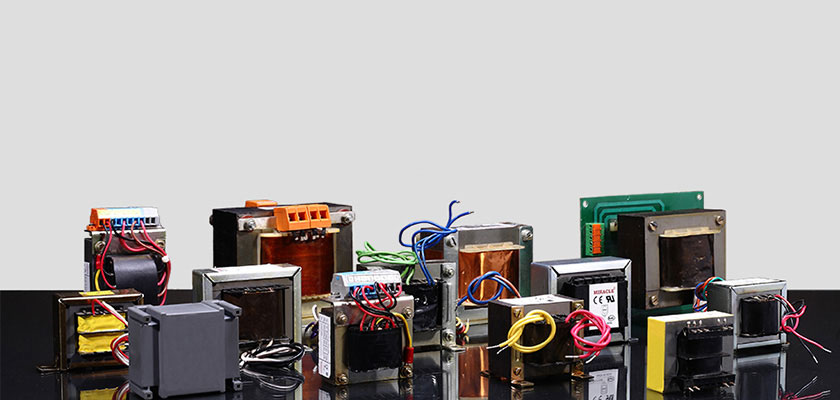A transformer is a static device that transforms electrical energy from one alternating current to another without any change in the frequency. Simultaneously, with the increase or decrease in current, the voltage is also altered from high to low or low to high. Increased voltage means it is stepped up, and a decreased voltage means it is stepped down. Any electrical transformers work on the basic principle that when the primary coil is connected to the alternating current supply, current flows through it and an alternating flux is set up in the core, which is mostly linked with the secondary coil.
What are power transformers?
Power transformers have a rating of about 20KVA, used in generating stations and substations at each power transmission line for stepping the voltage up or down. Power transformers in India are available as single or three phase, which you can get at Miracle Electronics at the best quality and rates. Power transformers are used during heavy load periods, and are disconnected during light load periods. This is why they are designed to have maximum efficiency and greater leakage resistance at full load.
There are certain important facts that are standard to any transformer –
- At no load, the primary applied voltage is balanced by the secondary in an ideal transformer.
- The induced electromagnetic force in the secondary winding of a transformer depends upon the frequency, flux, and number of turns in the secondary.
- The magnitude of flux in a transformer is same at all levels.
How are transformers tested?
Every transformer must be tested before use. In fact, every manufacturer must test their transformers before supplying them to their clients. Reputed manufacturers like Miracle Electronics always supply the finest power transformers in India that are always tested after being manufactured to check for any flaws and errors that can be rectified before supplying them into the market. There are two types of tests that should be performed on a transformer – open circuit test and short circuit test – which can determine the parameter or constants of the transformer, efficiency, and regulation. Let us learn about these tests in detail.
Open circuit test – This test determines the iron losses and no load current of the transformer. To perform this test, the winding with the lower voltage is connected to the normal supply with an ammeter to measure the voltage applied to the winding, and to a wattmeter to measure the voltage at no load. The winding with the higher voltage is kept open. This set up will create flux in the core, leading to iron losses, which will be indicated by the wattmeter.
Short circuit test – This test determines the copper losses at full load, and the equivalent resistance and reactance. To perform this test, a reduced value of the voltage is increased on the winding with the higher voltage until full load current flows. This produces is a relatively smaller flux, which is why the core losses can be neglected. The wattmeter used in this test indicates the total copper losses.




